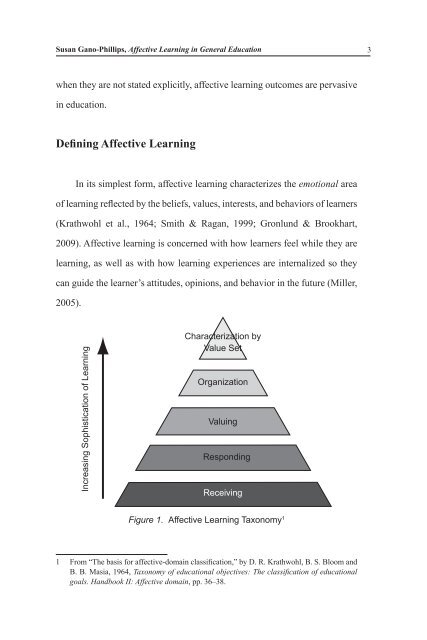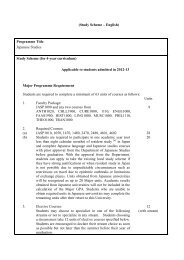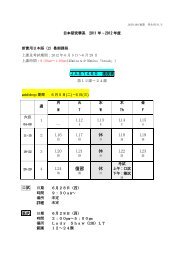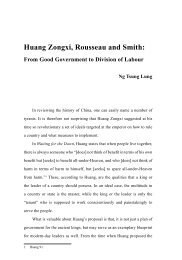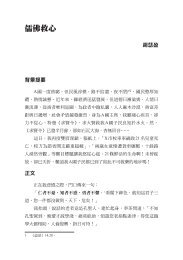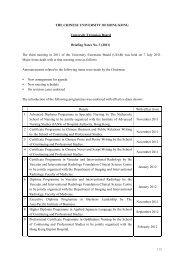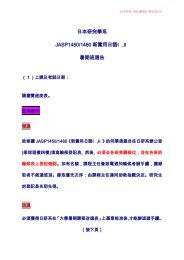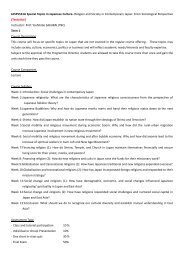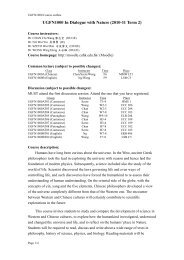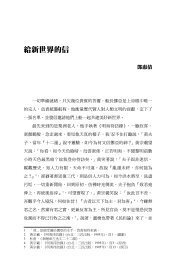ä¸è¼å ¨æ¸ - The Chinese University of Hong Kong
ä¸è¼å ¨æ¸ - The Chinese University of Hong Kong
ä¸è¼å ¨æ¸ - The Chinese University of Hong Kong
You also want an ePaper? Increase the reach of your titles
YUMPU automatically turns print PDFs into web optimized ePapers that Google loves.
Susan Gano-Phillips, Affective Learning in General Education<br />
<br />
when they are not stated explicitly, affective learning outcomes are pervasive<br />
in education.<br />
Defining Affective Learning<br />
In its simplest form, affective learning characterizes the emotional area<br />
<strong>of</strong> learning reflected by the beliefs, values, interests, and behaviors <strong>of</strong> learners<br />
(Krathwohl et al., 1964; Smith & Ragan, 1999; Gronlund & Brookhart,<br />
2009). Affective learning is concerned with how learners feel while they are<br />
learning, as well as with how learning experiences are internalized so they<br />
can guide the learner’s attitudes, opinions, and behavior in the future (Miller,<br />
2005).<br />
Increasing Sophistication <strong>of</strong> Learning<br />
Characterization by<br />
Value Set<br />
Organization<br />
Valuing<br />
Responding<br />
Receiving<br />
Figure 1. Affective Learning Taxonomy <br />
<br />
From “<strong>The</strong> basis for affective-domain classification,” by D. R. Krathwohl, B. S. Bloom and<br />
B. B. Masia, 1964, Taxonomy <strong>of</strong> educational objectives: <strong>The</strong> classification <strong>of</strong> educational<br />
goals. Handbook II: Affective domain, pp. 36–38.


